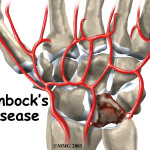INTRODUCTION
Neck pain is a common clinical presentation, affecting up to two-thirds of the population at some time in their life (Cote et al 1998). Therefore, as sports physiotherapists we will regularly assess and treat athletes with recent onset neck pain. As a component of rehabilitation many physiotherapists will include some form of evidence based manual therapy, commonly either mobilisation or manipulation (Hurwitz et al, 1996).
However, a clinical question I am often asked (by both myself and patients) is what additional benefits does manipulation provide, given the additional risks (Miley et al, 2008)? This clinical question is answered by a recent RCT that compares the use of mobilisation and manipulation in patients with recent onset neck pain (Leaver et al, 2010).
MOBILISATION OR MANIPULATION FOR RECENT ONSET NECK PAIN?
Leaver et al (2010) randomised 182 patients with recent onset (< 3 months) non-specific neck pain into two groups; those receiving manipulation or mobilisation, along with appropriate adjunctive therapies. The actual treatment prescription was designed by the treating therapist, which creates heterogeneous treatments, but also mirrors clinical practice. The patients underwent 4 treatments over a 2 week period, and were followed up for a period of 12 weeks. The primary outcome was time to recovery, which serves to highlight the popular belief that manipulation provides quicker recovery timeframes. Secondary outcomes included pain, function, and quality of life.
RESULTS: IS THERE A BENEFIT TO BEING A CRACK ADDICT?
The answer seems to be no. The patients recovery time-frames were essentially even between groups, with median time to recovery for mobilisation (43 days) and manipulation (47 days) being comparable. There were also no significant differences in outcomes of pain, disability, function, global perceived effect, or health-related quality of life. Interesting too was the fact that there was a recurrence rate of 28.6% in the manipulation group compared with 14.9% in the mobilisation group during the follow up period.
TAKE HOME MESSAGES and CLINICAL IMPLICATIONS
1. In this study population, manipulation did not produce superior results for;
- Recovery TIme
- Pain
- Function
- Global Perceived Effec
- HRQOL
- Recurrence.
2. Manipulation has a higher risk of adverse consequences (it seems without any additional benefits)
3. Think twice before using crack in patients with recent onset neck pain
What are your experiences with the use of cervical manipulations? Do you use them, and when do you find they produce clinically superior results? Be sure to let me know in the comments or catch me on Facebook or Twitter
If you require any sports physiotherapy products be sure check out PhysioSupplies (AUS) or MedEx Supply (Worldwide)
REFERENCES
Cote P, Cassidy JD, Carroll L. The Saskatchewan Health and Back Pain Survey: the prevalence of neck pain and related disability in Saskatchewan adults. Spine 1998;23:1689-98.
Hurwitz EL, Aker PD, Adams AH, Meeker WC, Shekelle PG. Manipulation and mobilization of the cervical spine: a systematic review of the literature. Spine 1996;21:1746-59.
Leaver AM, Maher CG, Herbert RD, Latimer J, McAuley JH, Jull G, Refshauge KM. A randomized controlled trial comparing manipulation with mobilization for recent onset neck pain. Arch Phys Med Rehabil 2010;91:1313-8.
Miley ML, Wellik KE, Wingerchuk DM, Demaerschalk BM. Does cervical manipulative therapy cause vertebral artery dissection and stroke? Neurologist 2008;14:66-73.
Related Posts









